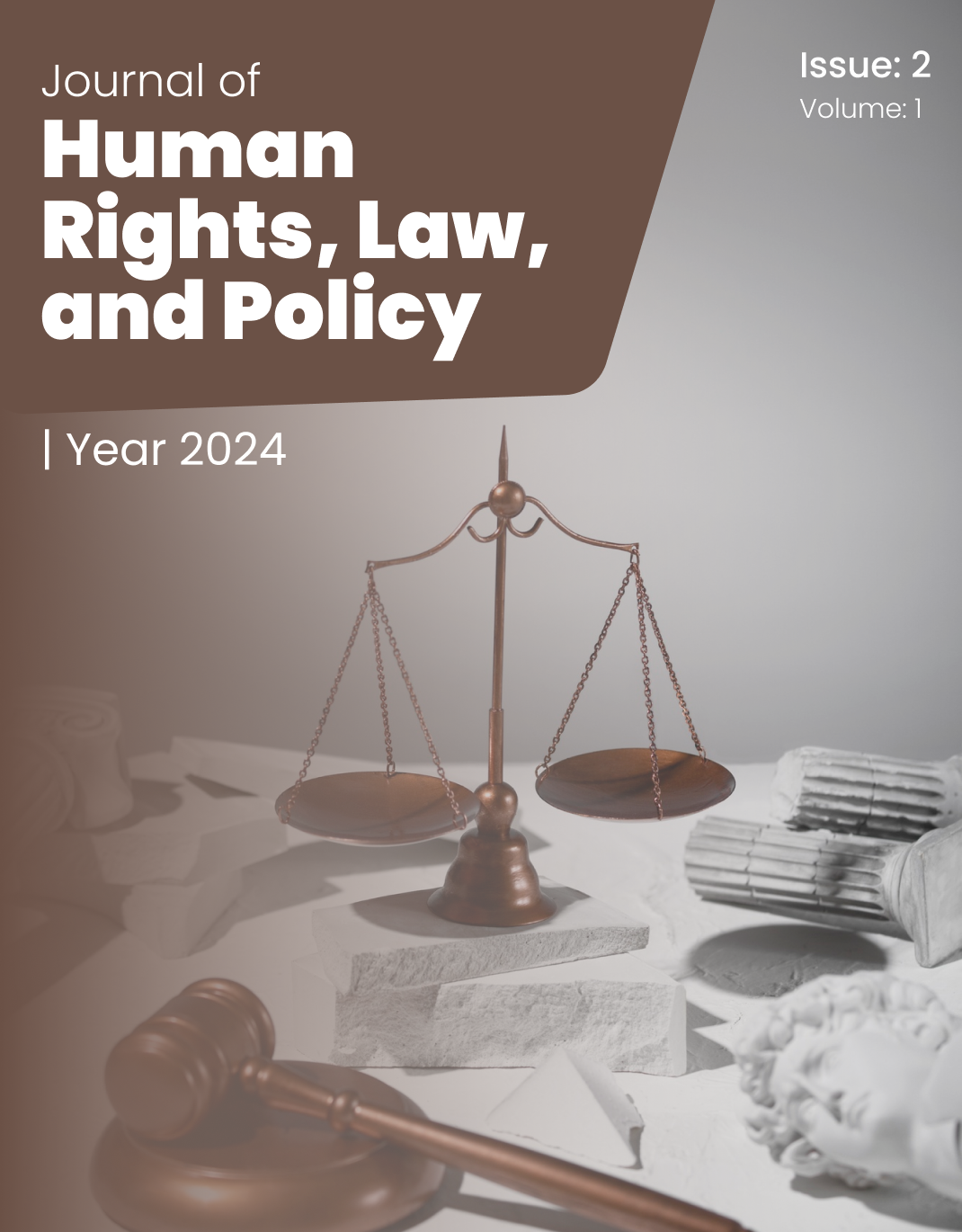Identifying Legal Gaps in the Protection of Internally Displaced Persons (IDPs)
Keywords:
Internally Displaced Persons, Legal Gaps, Protection, Iran, Qualitative Research, Internal Displacement, Legal Recognition, Institutional BarriersAbstract
This study aims to identify and analyze the legal gaps and institutional deficiencies affecting the protection of internally displaced persons (IDPs) in Iran, focusing on their experiences with legal recognition, access to rights, and administrative support. A qualitative research design was employed, utilizing semi-structured interviews conducted with 22 participants from Tehran, including IDPs, legal practitioners, and humanitarian actors. Participants were selected purposively to capture diverse perspectives. Data collection continued until theoretical saturation was achieved. Interviews were audio-recorded, transcribed verbatim, and analyzed thematically using NVivo software to identify core themes and subthemes related to legal protections and gaps. Three main themes emerged: (1) inadequate legal framework, characterized by the absence of dedicated national legislation, unclear legal status of IDPs, and conflicting property laws; (2) institutional and administrative gaps, including poor interagency coordination, weak enforcement capacity, inconsistent documentation procedures, and lack of legal aid; and (3) sociolegal consequences for IDPs, comprising rights deprivation, social marginalization, psychological impacts, reliance on informal justice systems, and distrust of formal legal mechanisms. These gaps collectively contribute to the marginalization and vulnerability of IDPs in Iran, limiting their access to justice, social services, and durable solutions. The study highlights critical legal and institutional shortcomings that impede effective protection and inclusion of IDPs in Iran. Addressing these gaps requires comprehensive national legislation, improved interagency coordination, expanded legal aid, and strengthened documentation and data systems. Such reforms are essential for fulfilling constitutional guarantees, enhancing legal recognition, and promoting the dignity and rights of displaced populations.
Downloads
References
Brookings Institution. (2010). Protecting Internally Displaced Persons: A Manual for Law and Policymakers. Brookings Institution.
Cohen, R., & Bradley, M. (2010). Disasters and Displacement: Gaps in Protection. Journal of International Humanitarian Legal Studies, 1(1), 95–142.
Cohen, R., & Deng, F. M. (2009). Masses in Flight: The Global Crisis of Internal Displacement. Brookings Institution Press.
Farhoodi, R. (2020). Legal vacuum in the management of displacement following natural disasters in Iran. Iranian Journal of Law and Society, 14(2), 45–63.
Ferris, E. (2014). Ten Years after the Guiding Principles on Internal Displacement: Achievements and Future Challenges. Forced Migration Review, 20(1), 4–6.
Ferris, E., & Donato, K. M. (2019). Refugees, Migration and Global Governance: Negotiating the Global Compacts. Routledge.
Habibi, M., & Mohammadi, L. (2021). Legal gaps in supporting displaced persons in Iran: A review of domestic legislation. Public Law Studies Quarterly, 52(3), 21–39.
IDMC. (2023). Global Report on Internal Displacement 2023. Internal Displacement Monitoring Centre. https://www.internal-displacement.org/global-report/grid2023
Kälin, W. (2012). Guiding Principles on Internal Displacement: Annotations. American Society of International Law.
Kälin, W., & Entwisle Chapuisat, H. (2017). Breaking the Impasse: Reducing Protracted Internal Displacement as a Collective Outcome. UN-OCHA.
Mooney, E., & Martin, S. (2004). Towards Durable Solutions for Internally Displaced Persons: A Dialogue between Practitioners and Scholars. Brookings Institution.
Roth, K. (2014). Informal justice mechanisms and human rights in Middle Eastern displacement settings. Journal of Refugee Studies, 27(2), 214–229.
Sadeghi-Boroujerdi, E. (2019). Disaster Governance and State Response in Iran. Middle East Law and Governance, 11(2), 155–176.
Sharif, H., & Soroush, M. (2022). Coordination Challenges in Humanitarian Response to Internal Displacement in Iran. International Journal of Humanitarian Studies, 6(1), 67–82.
United Nations. (1998). Guiding Principles on Internal Displacement. United Nations Office for the Coordination of Humanitarian Affairs (OCHA).
UNHCR. (2018). Handbook for the Protection of Internally Displaced Persons. United Nations High Commissioner for Refugees.
UN-OCHA. (2021). Protecting People in Displacement: A Human Rights-Based Approach. Office for the Coordination of Humanitarian Affairs.
Downloads
Published
Submitted
Revised
Accepted
Issue
Section
License

This work is licensed under a Creative Commons Attribution-NonCommercial 4.0 International License.

